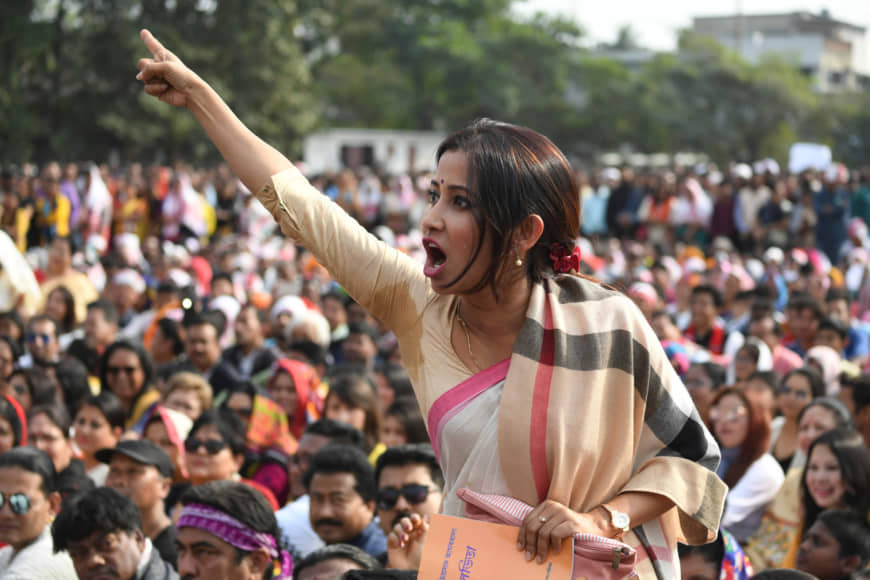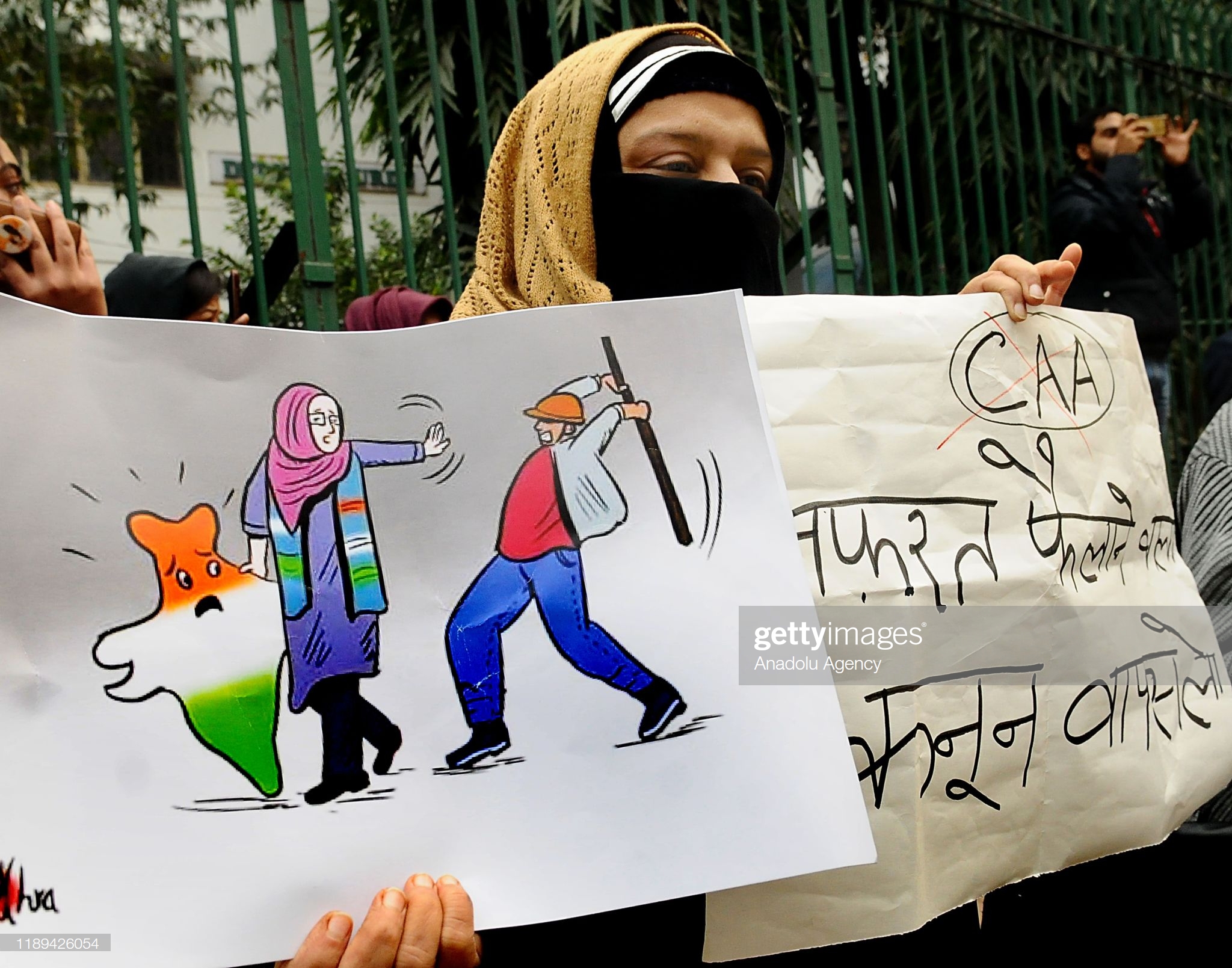Modis project to make a Hindu India (East Asia Forum 30-12-19)
December 31, 2019
When Scott Morrison visits India later this month, he should temper his marketing enthusiasm. The Modi government is fast-tracking India into uncharted territory despite a forest of flashing amber signs of dangers ahead.
An enduring puzzle in world affairs is the failure to impress upon nationalistically inflamed consciousness the enormous disparity between the goals envisioned, the means used, the results achieved and the price paid. Some of the most ardent nationalists do some of the gravest damage to their imagined nations. Indian Prime Minister Narendra Modi threatens to become the latest to make the same tragic mistake.
India represents the most successful example in history of managing the challenge of unity in diversity through a dynamic formula of power sharing and accommodation. This success lies in the three core features of the countrys constitutional structure: democracy, federalism and secularism.
In a country that is 80 per cent Hindu, at one time, the president, APJ Abdul Kalam, was a Muslim, the prime minister, Manmohan Singh, was a Sikh and the real power behind the administration was an Italian-born Catholic-raised immigrant, Sonia Gandhi.
Muslims constitute a 180-million strong minority in India. If they become disaffected through state-sponsored policies of exclusion, the country would descend into bloodbath and break apart. Conversely, they represent the largest and longest-standing refutation in the world of the alleged incompatibility between Islam and democracy.
The stakes are high for the world as much as for India.
Muslims and other minorities had begun to feel besieged by the Hindutva agenda a majoritarian project by hard-line Hindus to transform India into a Hindu Rashtra (nation) in Modis first term (201419). But not wanting to provoke untoward incidents in an increasingly febrile atmosphere, they mostly kept their silence.
The present conflagration has three fuses. The National Register of Citizens (NRC) is to be implemented in 2020 and requires people to produce evidence of their Indian citizenship or risk deportation. Introduced in the northeastern state of Assam in 2018, its purpose was to send illegal Muslim migrants back to Bangladesh. But this is in a country where the ownership of citizenship documentation is the exception and not the norm. None of us five siblings, for example, had a birth certificate.
In August, the government also revoked the special status of Jammu and Kashmir, Indias only Muslim-majority state. Finally, in December, Parliament passed the Citizenship (Amendment) Act (CAA). This will permit pre-2014 migrants from the neighbouring Muslim-majority countries of Bangladesh, Pakistan and Afghanistan who are Hindu, Christian, Jain, Buddhist and Sikh, but not Muslim, to become Indian citizens. The CAA was passed by both houses through brute majority without consultation and the Supreme Court may well find the CAA unconstitutional for discriminatory claims to citizenship on grounds of religion.

The CAA proved to be the last straw and protests broke out in Assam and have spread all over the country. Ironically, the Assamese object to all migrants Hindus from India as much as Muslims from outside. Footage of police attacks on students protesting against the CAA at the Muslim-majority Jamia Millia Islamia and Aligarh Muslim University educational institutions vented pent-up fury against the crackdown. The protests have escalated to become the largest in decades and represent the most significant mass mobilisation against the Modi government. By 27 December, violence across Indias largest state, Uttar Pradesh, had caused 23 deaths many by police bullets.
The end to Jammu and Kashmirs special status was followed by the shutting down of telecommunications and prohibiting of public gatherings. Initially, out of sight became out of mind for the rest of India, but now these state-ordered restrictions have hit them all and communications shutdowns and curfews are suddenly more than an abstraction. Trust in the top political leadership has also been dented by the mess of contradictions, inconsistencies and falsehoods with respect to the linkage between the CAA and the NRC and the creation of detention centres to hold those without the necessary documentation.
The CAA is meant to appease Modis Hindu base by creating a two-tier citizenship defined by religion. Apprehensions about its scope for abuse have grown because of the potential links with the National Population Register (NPR), a massive electronic database of all residents that will be updated next year. In addition, it will directly undermine Modis economic agenda by reducing investor confidence in Indias social cohesion and political stability. Externally, it negates Modis deliberate outreach to Bangladesh and the Arab countries. Japanese Prime Minister Shinzo Abes planned meeting with Modi in Assam has been postponed. The misstep offers unexpected opportunities to China to court Indias neighbours. And, undoing decades of Indian diplomacy, it re-hyphenates India and Pakistan by strengthening the narrative that the two nations are founded on religions that cannot coexist.
India can rudely brush off criticism from Malaysian Prime Minister Mahathir Mohamad, but cannot ignore the gathering hostility in influential US circles to rising Hindu fundamentalism. In Modis first term, disquiet was whispered by liberals uneasy at signs that religious zealots want to turn India into a Hindu Pakistan. The new NRC, annulment of Jammu and Kashmirs autonomy and now the CAA mean that, as an editorial in The Indian Express put it, murmurs of concern across the American political spectrum during the first term of the Modi government have turned into vocal objections in the second.

Still, there are four positive features on which to end. First, in testament to the vitality of federalism, several states, including some ruled by allies of Modis Bharatiya Janata Party, insist they will refuse to implement the CAA and NRC. Second, the protests have been spearheaded by idealistic students intent on reclaiming the founding idea of India: a pluralistic, secular, tolerant and all-inclusive republic. Third, the protest movement is comprised of students, citizens and political leaders from all religions, with some prominent public intellectuals among those detained by the police, including the noted historian Ramachandra Guha.
Finally, the Muslim students, especially young women, have been most politically savvy in defying Hindutva hardliners. They were brilliantly clever in wearing identifiably Muslim dress like the hijab and skullcap, but wrapping themselves in the Indian tricolour, chanting the national anthem and reading excerpts from the Indian Constitution.
The message to Modi is visible, stark and powerful: we are Indians, we are the custodians of constitutional values, we are patriots, and we stand for the unity of India and of all Indians. You, Sir, are the threat to all four.
Ramesh Thakur is Emeritus Professor at The Australian National University and a former United Nations Assistant Secretary-General.
The original article can be found here.
